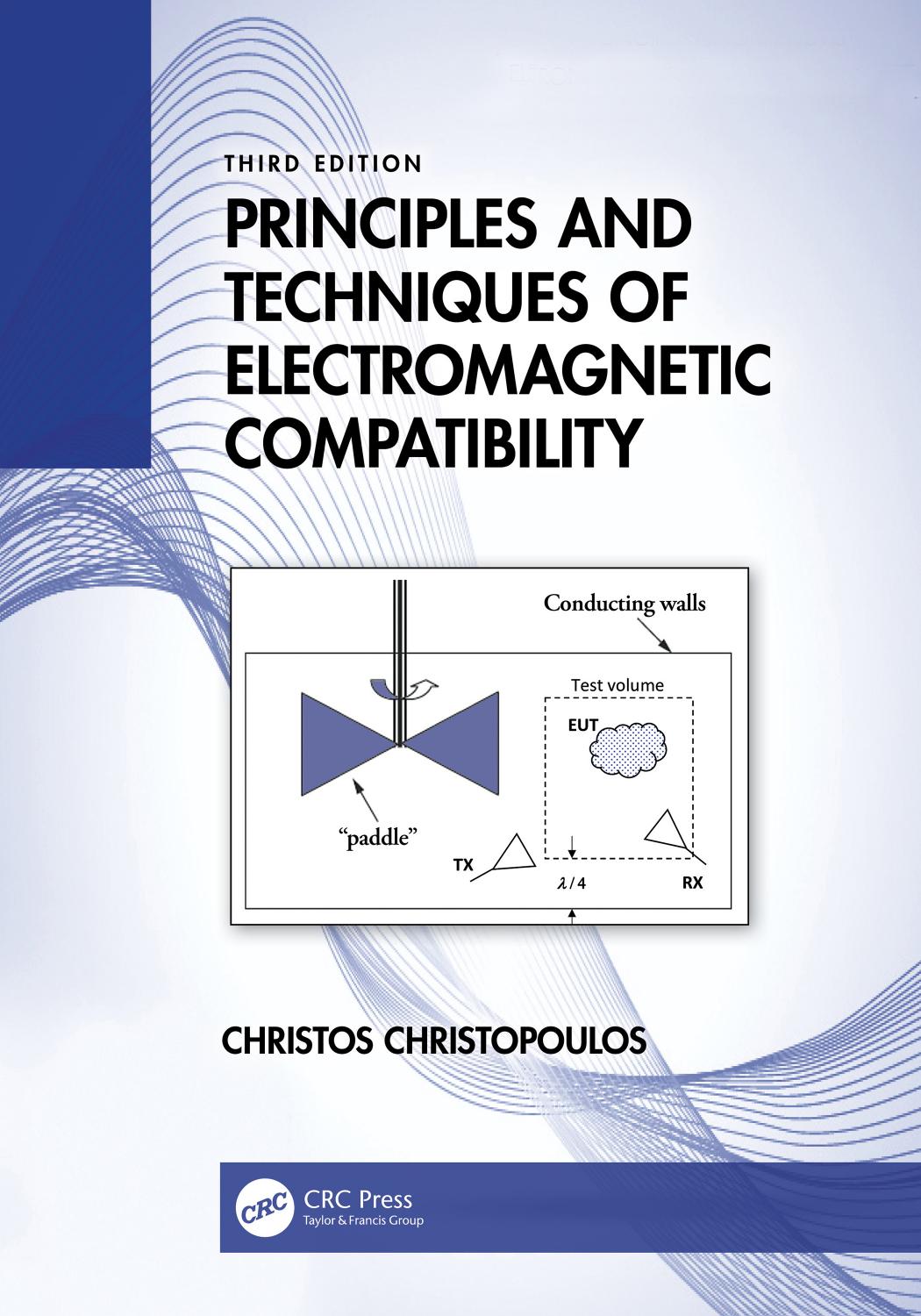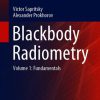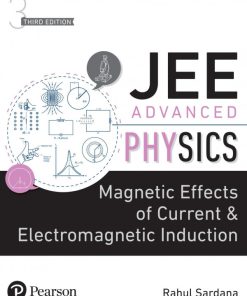Principles and Techniques of Electromagnetic Compatibility 3rd Edition by Christos Christopoulos 1000631788 9781000631784
$50.00 Original price was: $50.00.$25.00Current price is: $25.00.
Principles and Techniques of Electromagnetic Compatibility 3rd Edition by Christos Christopoulos2 – Ebook PDF Instant Download/Delivery: 1000631788, 9781000631784
Full download Principles and Techniques of Electromagnetic Compatibility 3rd Edition after payment

Product details:
ISBN 10: 1000631788
ISBN 13: 9781000631784
Author: Christos Christopoulos
Principles and Techniques of Electromagnetic Compatibility 3rd Table of contents:
PART I Underlying Concepts and Techniques
Chapter 1 Introduction to Electromagnetic Compatibility
Chapter 2 Electromagnetic Fields
2.1 Static Fields
2.1.1 Electric Field
2.1.2 Magnetic Field
2.2 Quasistatic Fields
2.2.1 The Relationship Between Circuits and Fields
2.2.2 Electromagnetic Potentials
2.3 High-Frequency Fields
2.3.1 Electromagnetic Waves
2.3.2 Radiating Systems
References
Chapter 3 Electrical Circuit Components
3.1 Lumped Circuit Components
3.1.1 Ideal Lumped Components
3.1.2 Real Lumped Components
3.2 Distributed Circuit Components
3.2.1 Time-Domain Analysis of Transmission Lines
3.2.2 Frequency-Domain Analysis of Transmission Lines
References
Chapter 4 Electrical Signals and Circuits
4.1 Representation of a Signal in Terms of Simpler Signals
4.2 Correlation Properties of Signals
4.2.1 General Correlation Properties
4.2.2 Random Signals
4.3 The Response of Linear Circuits to Deterministic and Random Signals
4.3.1 Impulse Response
4.3.2 Frequency Response
4.3.3 Detection of Signals in Noise
4.4 The Response of Nonlinear Circuits
4.5 Characterization of Noise
References
PART II General EMC Concepts and Techniques
Chapter 5 Sources of Electromagnetic Interference
5.1 Classification of Electromagnetic Interference Sources
5.2 Natural Electromagnetic Interference Sources
5.2.1 Low-Frequency Electric and Magnetic Fields
5.2.2 Lightning
5.2.3 High-Frequency Electromagnetic Fields
5.3 Man-Made Electromagnetic Interference Sources
5.3.1 Radio Transmitters
5.3.2 Electroheat Applications
5.3.3 Digital Signal Processing and Transmission
5.3.4 Power Conditioning and Transmission
5.3.4.1 Low-Frequency Conducted Interference
5.3.4.2 Low-Frequency Radiated Interference
5.3.4.3 High-Frequency Conducted Interference
5.3.4.4 High-Frequency Radiated Interference
5.3.5 Switching Transients
5.3.5.1 Nature and Origin of Transients
5.3.5.2 Circuit Behavior during Switching Assuming an Idealized Switch
5.3.5.3 Circuit Behavior during Switching Assuming a Realistic Model of the Switch
5.3.6 The Electrostatic Discharge (ESD)
5.3.7 The Nuclear Electromagnetic Pulse (NEMP) and High Power Electromagnetics (HPEM)
5.4 Surveys of the Electromagnetic Environment
References
Chapter 6 Penetration through Shields and Apertures
6.1 Introduction
6.2 Shielding Theory
6.2.1 Shielding Effectiveness
6.2.2 Approximate Methods—The Circuit Approach
6.2.3 Approximate Methods—The Wave Approach
6.2.4 Analytical Solutions to Shielding Problems
6.2.5 General Remarks Regarding Shielding Effectiveness at Different Frequencies
6.2.6 Surface Transfer Impedance and Cable Shields
6.3 Aperture Theory
6.4 Rigorous Calculation of the Shielding Effectiveness (SE) of a Conducting Box with an Aperture
6.5 Intermediate Level Tools for SE Calculations
6.6 Numerical Simulation Methods for Penetration through Shields and Apertures
6.6.1 Classification of Numerical Methods
6.6.2 The Application of Frequency-Domain Methods
6.6.3 The Application of Time-Domain Methods
6.7 Treatment of Multiple Apertures through a Digital Filter Interface
6.8 Further Work Relevant to Shielding
References
Chapter 7 Propagation and Crosstalk
7.1 Introduction
7.2 Basic Principles
7.3 Line Parameter Calculation
7.3.1 Analytical Methods
7.3.2 Numerical Methods
7.4 Representation of EM Coupling from External Fields
7.5 Determination of the EM Field Generated by Transmission Lines
7.6 Numerical Simulation Methods for Propagation Studies
References
Chapter 8 Simulation of the Electromagnetic Coupling between Systems
8.1 Overview
8.2 Source/External Environment
8.3 Penetration and Coupling
8.4 Propagation and Crosstalk
8.5 Device Susceptibility and Emission
8.6 Numerical Simulation Methods
8.6.1 The Finite-Difference Time-Domain (FD-TD) Method
8.6.2 The Transmission-Line Modeling (TLM) Method
8.6.3 The Method of Moments (MM)
8.6.4 The Finite-Element (FE) Method
8.7 EMC Modeling of Complex Systems
References
Chapter 9 Effects of Electromagnetic Interference on Devices and Systems
9.1 Immunity of Analogue Circuits
9.2 The Immunity of Digital Circuits
9.3 Effects of Intentional EMI on Infrastructure Systems
9.4 EMI Risk Management
References
PART III Interference Control Techniques
Chapter 10 Shielding and Grounding
10.1 Equipment Screening
10.1.1 Practical Levels of Attenuation
10.1.2 Screening Materials
10.1.3 Conducting Penetrations
10.1.4 Slits, Seams, and Gasketing
10.1.5 Damping of Resonances
10.1.6 Measurement of Screening Effectiveness
10.2 Cable Screening
10.2.1 Cable Transfer Impedance
10.2.2 Earthing of Cable Screens
10.2.3 Cable Connectors
10.3 Grounding
10.3.1 Grounding in Large-Scale Systems
10.3.2 Grounding in Self-Contained Equipment
10.3.3 Grounding in an Environment of Interconnected Equipment
10.4 Novel Materials and EMC
10.4.1 Metamaterials
10.4.2 Nanomaterials
References
Chapter 11 Filtering and Nonlinear Protective Devices
11.1 Power-Line Filters
11.2 Isolation
11.3 Balancing
11.4 Signal-Line Filters
11.5 Nonlinear Protective Devices
References
Chapter 12 General EMC Design Principles
12.1 Reduction of Emission at Source
12.2 Reduction of Coupling Paths
12.1.1 Operating Frequency and Rise-Time
12.2.2 Reflections and Matching
12.2.3 Ground Paths and Ground Planes
12.2.4 Circuit Segregation and Placement
12.2.5 Cable Routing
12.3 Improvements in Immunity
12.3.1 Immunity by Software Design
12.3.2 Spread Spectrum Techniques
12.4 The Management of EMC
References
PART IV EMC Standards and Testing
Chapter 13 EMC Standards
13.1 The Need for Standards
13.2 The International Framework
13.3 Civilian EMC Standards
13.3.1 FCC Standards
13.3.2 European Standards
13.3.3 Other EMC Standards
13.3.4 Sample Calculation for Conducted Emission
13.4 Military Standards
13.4.1 Military Standard MIL-STD-461D
13.4.2 Defense Standard DEF-STAN 59-41
13.5 Company Standards
13.6 Power Quality, Electrical Drives, and Smart Grids
13.7 EMC at Frequencies above 1 GHz
13.8 Human Exposure Limits to EM Fields
References
Chapter 14 EMC Measurements and Testing
14.1 EMC Measurement Techniques
14.2 Measurement Tools
14.2.1 Sources
14.2.2 Receivers
14.2.3 Field Sensors
14.2.4 Antennas
14.2.5 Assorted Instrumentation
14.3 Test Environments
14.3.1 Open-Area Test Sites
14.3.2 Screened Rooms
14.3.3 Reverberating Chamber Basics
14.3.4 Reverberating Chamber Characterization and Modeling
14.3.5 Special EMC Test Cells
References
PART V EMC in Systems Design
Chapter 15 EMC and Signal Integrity (SI)
15.1 Introduction
15.2 Transmission Lines as Interconnects
15.3 Board and Chip Level EMC
15.3.1 Simultaneous Switching Noise (SSN)
15.3.2 Physical Models
15.3.3 Behavioral Models — IBIS
15.3.4 Near-Field Scans
15.3.5 Analytical Approaches to Complexity Reduction
References
Chapter 16 EMC and Wireless Technologies
16.1 The Efficient Use of the Frequency Spectrum
16.2 EMC, Interoperability, and Coexistence
16.3 Specifications and Alliances
16.4 Internet of Things (IoT) and EMC
16.5 Wireless Power Transfer (WPT) and EMC
16.6 Characterization and Testing of Wireless Systems Performance in Resonant Environments
16.7 EMC Testing in the Time Domain
16.8 Conclusions
References
Chapter 17 EMC and Broadband Technologies
17.1 Transmission of High-Frequency Signals over Telephone and Power Networks
17.2 EMC and Digital Subscriber Lines
17.3 EMC and Power Line Telecommunications (PLT)
17.4 Regulatory Framework for Emissions from xDSL/PLT and Related Technologies
References
Chapter 18 EMC and Safety
References
Chapter 19 Statistical EMC
19.1 Introduction
19.2 The Basic Stochastic Problem
19.3 Statistical Approaches to EMC Problems
19.4 Theoretical Basis for Stochastic Models
19.4.1 Gaussian Quadrature, Polynomial Chaos Expansion, Statistical Collocation, and Unscented Transform
19.4.2 The Curse of Dimensionality
19.5 Applications of Stochastic Models in EMC
References
Chapter 20 EMC in Different Industrial Sectors
20.1 EMC in Automotive Applications
20.2 EMC in Railway Applications
20.3 EMC in Aerospace Applications
20.4 EMC in Marine Applications
References
Chapter 21 EMC Outlook
References
Appendix A: Useful Vector Formulae
Appendix B: Circuit Parameters of Some Conductor Configurations
Appendix C: The sinx/x Function
Appendix D: Spectra of Trapezoidal Waveforms
Appendix E: Calculation of the Electric Field Received by a Short Electric Dipole
Appendix F: Calculation of the Parameters of a Series RLC Circuit
Appendix G: Computation of the Discrete Time-Domain Responses of Lumped Circuits
Appendix H: The Normal (Gaussian) Distribution
Index
People also search for Principles and Techniques of Electromagnetic Compatibility 3rd :
principles and techniques of vibrations
principles of electromagnetism
electromagnetic compatibility handbook
fundamentals of electromagnetic compatibility
Tags:
Christos Christopoulos,Principles,Techniques
You may also like…
Physics - Electricity and Magnetism
Principles and Technologies for Electromagnetic Energy Based Therapies 1st Edition
Technique - Aerospace Equipment
Airfield Compatibility Key Principles for Landing Gear R. Kyle Schmidt
Uncategorized
Engineering - Engineering - General & Miscellaneous
Introduction to Discrete Event Systems 3rd 3rd Edition Christos G Cassandras Stéphane Lafortune
Chemistry - Chemistry - General & Miscellaneous
Principles of General Chemistry Martin Silberberg 3rd Edition Principles Of General Chemistry
Physics - Electricity and Magnetism
Engineering - Electrical & Electronic Engineering
Uncategorized
Principles of Microeconomics 3rd Edition by Dirk Mateer, Lee Coppock 9780393679199 0393679195










